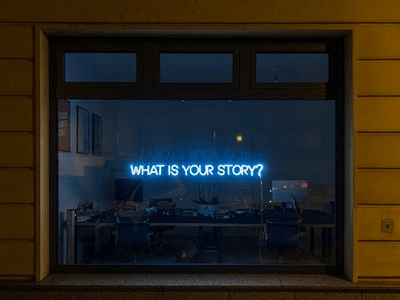Online Film School Free » Script Writing Class » The Movie Three-Act Structure
The Three act Film Script Structure
Table of Contents
Toggle
What is the movie’s three-act structure?
Story structure is one of the necessary tools to use within storytelling. The goal of the script’s three-act structure is to organize the events into three acts, so they will be apparent to the audience and build tension and a rising emotion in the script. Syd Field first mentioned the film script structure of three acts in his book Screenplay in 1978, but its origin is from the book Poetics by Aristotle, who split the plays into two acts: desis (binding ) and lysis (unbinding).
I’m not going to go deep into the history of the three-act structure, but you should know that In the book Poetics, Aristotle analyzes greek theatre that was really successful at the time.
The idea of the three-act structure is to divide the script into three acts: act 1 (also known as the ‘set up act’), act 2 (Also known as ‘The Building Act or ‘The Confrontation Act’), and act 3 (also known as ‘The Resolution Act’). Those acts will pose the dramatic conflicts our protagonist is going through. In this article, I will explain more about it and give you some film script structure examples, but before we get deep into the classic movie plot structure, you should know a few things.
4 Tips for working with script structure
- The movie’s three-act structure is not a formula! Its only purpose is to help you understand when each part of the script ends and begins.
- When to start working with the 3 acts rule? –When working on the first draft of your script, you should have the film structure in mind, but I recommend getting deep into the story structure only in the second draft so you won’t end up with a very formulaic script. I also recommend working with story structure only after you understand your characters and the change they are going through. Now: as I said, script structure is a fundamental tool, and when you start to analyze films, you’ll see that most of them, if not all, use it.
- Listen to the beat – To understand story structure, we have to understand the beat. Now: If you read the bible of scriptwriting, also known as Robert McKee’s book – Story, then you’ve heard about this story element. It means a small turning point that happens inside a scene for those of you who haven’t read it. Every scene should have at least one beat in it. When working on the story’s structure, I recommend writing a list of all the beats in the script. If you are using tools like Final Draft, you have a feature that can show you a list of all your beat (along with other cool features)
- Timing each part of the story structure – Most script writing guides and lessons will also tell you how much time each part should have. I’m really against that kind of teaching. I don’t believe there should be a fixed time limit for each part of any film. Another thing about timing the acts is that those guides do not fit short films.
When working with the three-act structure, remember this
The most important thing you need to remember about working with script structure is that it is here to guide you. Don’t be too obsessed about it. On the other hand, if you are working on the script and something doesn’t work for you, checking the script structure will be a good start. The thing is: you can play with the format however you’ll like, but eventually, most films, even the one that looks originals and unique, are pretty much following the 3 acts rule.
Another critical thing to remember is that all acts should arise from the protagonist’s desire. The one thing he wants should be your guide through these acts. I suggest writing down the protagonist’s goal on a piece of paper and looking at it while going through the acts. In my Developing Characters post, you can read about working with the protagonist’s desires. It would help if you remembered that the structure is for the plot and the internal journey that the hero is going through.

The opening- Act 1
The opening act is the most crucial part, so we will go a little deep into this one. If the opening (exposition)is not working, you have a problem, and I wouldn’t continue until it is working. The opening or the exposition is where we build the story’s setup. It’s where you establish the main characters, their relationships and the world they live in. This act will end with an event that will completely change the protagonist’s world.
Pro Tip!
Use the opening act to introduce the theme of the story or the general question of the theme. This theme will drive the rest of the story
As mentioned before, the first act will end with a significant event called ‘a turning point’ (also known as the catalyst). We will have a few of these turning points throughout the script, and this is the first one. This turning point will bring our central character conflict and an opportunity to solve it. The main character will have to solve the conflict as it changed their lives completely. The turning point should also introduce us to the theme of the movie. In the movie Back To The Future, the turning point is when doc brown shows Marty his new experiment and the Libyan terrorists are trying to kill him. Marty is forced to run away in the Delorean and accidentally fly into the past.
4 must-know tips about exposition
- Good exposition won’t cover up a bad story – The exposition of a script is one of the essential elements of a story, but, the absolute truth is that the middle is essential too and the ending, So before you start worrying about the opening, make sure you got your story right. Start working on the exposition only after you wrote the first draft.
- Don’t start the story too soon – Make sure the setup is done correctly before moving on to the turning point.
- Don’t waste your audience’s time with too many explanations. See if there are explanations you can delete or move to act 2.
- Make sure that we know the protagonist enough to feel empathy for him.
4 must-know tips about characters in the exposition
The exposition introduces us to the main character. We get to know the main character in its “normal world” before everything goes wrong, but the exposition has another job too – it needs to make us care about the characters and fast. Here are some tips for introducing the characters in the narrative exposition:
- Don’t overload – When you introduce new characters, don’t overload them with information. See if you can delay the information about them. Sometimes it works even to delay some information about a character to the second act.
- First impression counts – The exposition is the time to create the first impression of your character, and one of the crucial things you need to create about her is credibility. We have to believe her. We’ll agree to let her walk us through the story if she is believable. The way to make her more believable is by actions. You should always ask yourself if there is a fast way to show what the character tells us through behaviour. If I want the audience to know my hero is an angry man, does he have to say it, or can I show it through his actions?
- Start with action – An action is always exciting and quickly gets the audience’s attention. Still, it would help if you remembered that everything you do in the exposition says something about your movie, especially the beginning, so think about that when you write the film’s opening.
- Your character’s background – The viewer needs to understand the script’s context, what happened before the movie started, and put all the characters where they are now. Of course, you don’t need to give all of the character’s histories, but you need to bring important information for the story. The characters’ background started to grow the character’s motivation (You can read about the character’s motivation in the lesson about Developing Characters. Writing the characters’ background is hard because you need to do it quickly and creatively (try not to let the character tell her story). In the opening of the movie Pulp fiction, we can see right from the conversation that the couple is tired from the rubbering liquor store, and that’s why they want to rubber the dinner.
Setting up the mood in Act one
Another goal of an exposition of a story, especially in the opening sequence, is to set the mood and tell us what kind of movie it will be. One way of doing that is through emotions. If it’s a comedy, start telling jokes. If it’s a horror film, start creating a scary atmosphere.
An excellent exposition example is In the movie Pulp Fiction. In Pulp fiction, we can understand right from the start that this movie will take a funny look at gangsters.
Instead of showing the gangsters meeting in a dark alley and talking about rubbing, they do that right in a dinner in daylight with regular clothes. In the dialogue, the husband tells the story about a new kind of gangster that use their phone to pretend it’s a gun. That’s what Tarantino is saying about his film – I’m going to create a new kind of gangster for the cinema.
The opening of Donnie Darko starts with a dark lighting that tells us it’s going to be a dark film. We see a young boy lying on a mountain that seems to be in the middle of nowhere. The boy starts laughing, and we can understand that this is a weird film about a weird boy. The boy rides back home to his typical family.
Starting with the turning point
Many movies start right away with the turning point to get the audience excited right at the start, but it also sends the message that this movie will be intense and with lots of action and suspense. If you can deliver that kind of promise, you are welcome to do that. When you finish writing the first act, try to see what promises it delivers about the film and fulfil these promises.
Using dialogue as an exposition
Now, The Pulp Fiction opening is just “talking heads,” and nothing happens, and when something already happens, we cut to the title, but this is all point of the film, and Tarantino, being a skilful writer, can pull it off quickly. One of the reasons he is pulling it off is the following law about dialogue in act 1: If you use dialogue to deliver information at the exposition, make sure you have something powerful to compensate. In Pulp Fiction, it’s the fact that we hear two gangsters talk about expanding their rubbery “business,” and they don’t follow any of the genre rules about gangsters in films. Another good lesson you can learn from this opening is that if you decide to introduce us to your characters by making them talk, make sure they have something interesting to talk about, and, if possible – a conflict.

Act 2- Rising Action
The second act is the most challenging act to write in the script. This act will tell us the consequences of the turning point and how the hero will deal with them. All of the hero’s world has changed, and now he will have to fix it by the time the film ends. The hero shouldn’t go right away to fix the problem. He will start by learning how to adjust to the new life first, understand what’s just happened. Only after he deals with the problem he can start taking action.
Quick Tip!
The second act is also where you should develop the relationships introduced to us in the first act. The act can also introduce to us other conflicts and sub-plots.
There are a few things to be careful of when writing act two. Sometimes we get too attached to the protagonist and try too much to think like him. It is good to start thinking from the antagonist a bit, especially in this act. The antagonist is as principal as the protagonist.
The second turning point
The second turning point is still the second act. By now, our hero knows what he is doing. He has a plan, and he is working on it, but something just went wrong, and his plans need to be changed. This stage takes most of the second act, and it will include primarily obstacles to the protagonist.
The third turning point
The third turning point is where the story gets complicated, and it looks like everything the hero has worked for is going down the drain. At this point, he has to make the most significant choice of his life so far. In a short film, this point should be the second turning point.
The second turning point is critical because now we get to know him.
An excellent third turning point is In the movie “Who framed Roger Rabbit,” in which Edi understands he has to go inside toon town, where his brother got killed in case he wants to solve the case. This is his biggest fear, and while deciding that, he also decides to stop drinking.
Quick tip on writing turning point:
When writing turning points, always ask yourself if they are believable enough. There is a tendency with new writers to bring a turning point out of nowhere. Always do what you can to make them more believable.
The Climax
The Climax is where the hero faces the consequences of his last extensive choice. He has no choice but to face his biggest challenge. He has no way of turning back, and he has to face it all. Again in the movie “Who framed Roger Rabbit” (spoiler alert!!!!), this is where Edi meets the cartoonish character that killed his brother.
It’s nice to have a twist in the plot when you get to the Climax. Think of all the possible situations your hero can get to at this point and try to eliminate the obvious ones. The more the conflict gets complicated at the climax stage, the more your protagonist solution needs to be. When writing a climax with a big twist in the plot, make sure you’ve put enough clues to it throughout the story and that you used them wisely. When I say “used them wisely,” I mean putting them in a way the audience will not notice at the time. Putting them in the high point of an action scene is a good example.
The ending
Now we have to see how our main character’s life has changed. The central conflict and the sub-conflicts should be solved by now.
These are the 3 acts story structure. When you are working on the second draft, you should make sure that there is a clear distinction between all 3 acts. Especially when you feel something is not working in your story.
The benefits of the movie three act structure
There are many benefits to working with the three-act film script structure:
- it will create a good developing arc and climax for your story
- It will help each scene in your store to have a good and strong start and end.
- It’s great for beginning screenwriters
The only disadvantage of the three-act structure is that it makes you think too much. So as I said before, don’t think about it too much on the first drafts.



